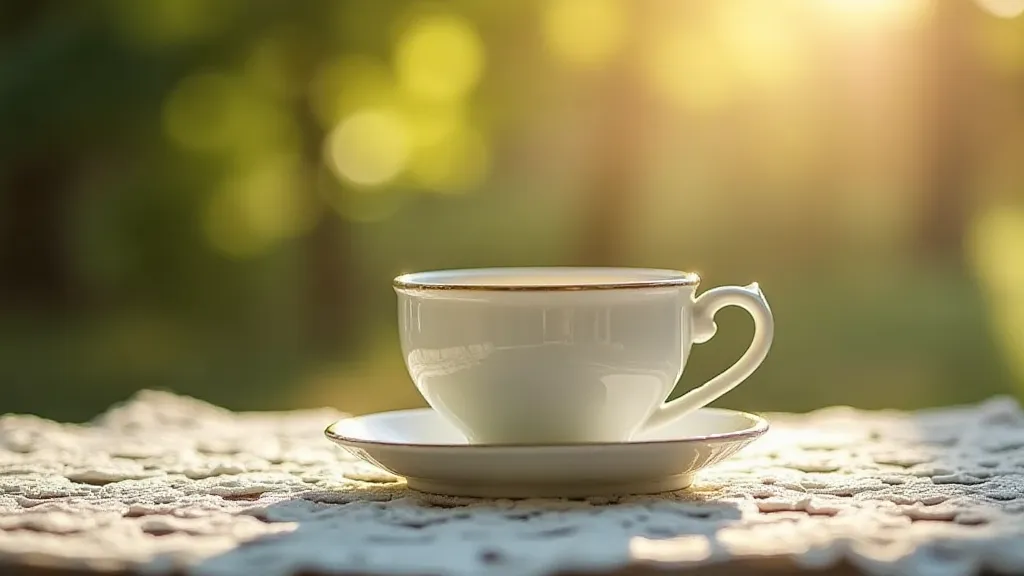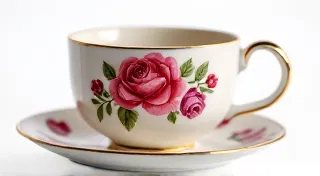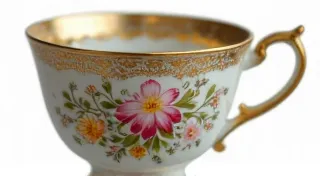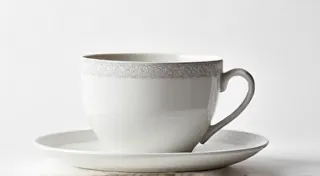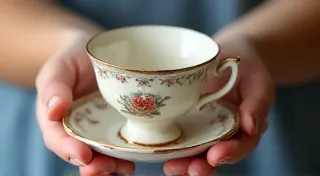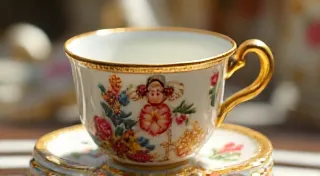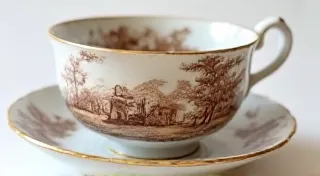Echoes in Porcelain: How Collecting Antique Tea Cups Unearths Forgotten Narratives
There's a particular quiet that settles when you hold an antique tea cup. It’s not merely the absence of sound, but a feeling of connection to something larger than yourself, a tangible link to generations past. More than just elegant vessels for a comforting beverage, these porcelain treasures are silent storytellers, holding within their delicate forms echoes of lives lived, social customs observed, and historical moments experienced. Collecting antique tea cups isn’t simply about accumulating beautiful objects; it's about embarking on a journey of historical archeology, a deeply personal exploration of the human narrative embedded within collectable china.
I remember my grandmother's tea set. It wasn’t particularly valuable, just a simple, floral pattern on creamy white porcelain. But for me, it was a portal. Sitting with her, sipping lukewarm tea from those cups, felt like stepping back in time. She’s gone now, but the memory, and the feeling it evoked, persists, amplified whenever I encounter a similarly aged cup. This, I believe, is the core appeal of collecting these fragile artifacts—the promise of uncovering fragments of lost worlds.
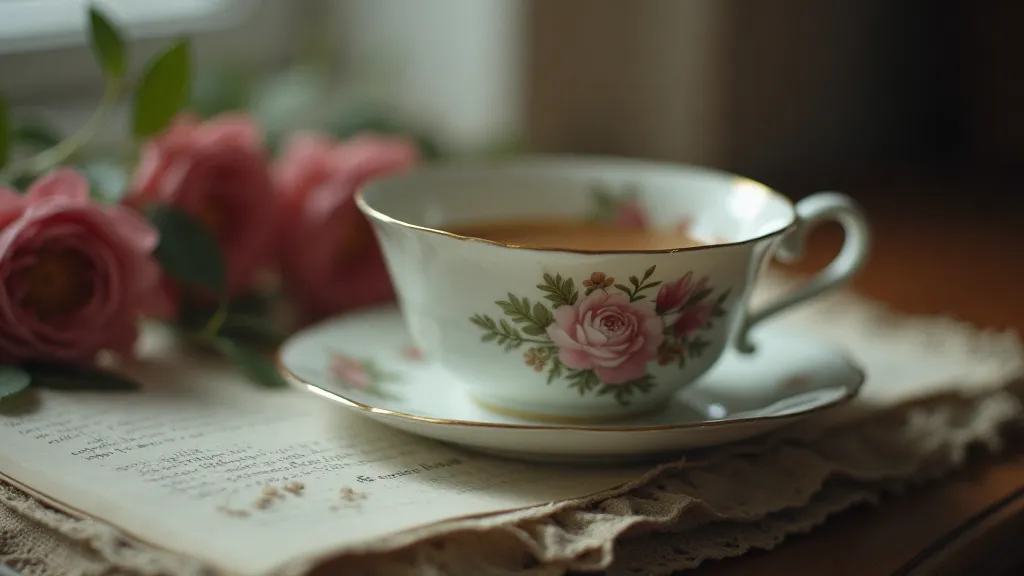
The Social Significance of Tea and Tea Sets
To truly appreciate the significance of antique tea cups, it’s vital to understand the historical context of tea itself. Tea wasn’t always the commonplace beverage we know today. Initially a luxury good imported from China, it gradually permeated European society, becoming deeply intertwined with social rituals and class distinctions. The elaborate tea ceremonies of the Victorian era, for example, dictated specific etiquette, dress codes, and, crucially, the display of exquisite china. Owning a fine tea set wasn’t merely about enjoying a warm drink; it was a demonstration of wealth, refinement, and social standing. The impact of these Victorian sensibilities on design continues to influence modern aesthetics; many collectors are fascinated by the influence of Victorian era styles on tea cup design.
Consider the rise of the “tea room” in the late 19th and early 20th centuries. These establishments, often frequented by women, served as social hubs and offered a respite from the confines of the home. The tea cups used in these spaces were often works of art, reflecting the aspirational aesthetics of the time. The intricate detailing, the delicate gilding, the carefully chosen patterns – all were carefully orchestrated to create a specific atmosphere of elegance and sophistication. The care taken in selecting and displaying these cups highlights the importance of preserving their condition; learning how to care for your antique tea cups is a crucial element in appreciating and maintaining this legacy.
Identifying Key Manufacturers and China Patterns
Identifying antique tea cups can be a rewarding, albeit challenging, endeavor. Several key manufacturers emerged throughout the 18th, 19th, and 20th centuries, each with its distinct style and mark. Wedgwood, Royal Albert, Shelley, Coalbrookdale, and Meissen are just a few of the names that regularly appear in the collecting world. Recognizing the manufacturer's mark – often a small stamp on the base of the cup – is the first step in identification. However, even more fascinating is understanding the patterns themselves.
China patterns often reveal a great deal about the period in which they were created. Floral motifs, for example, evolved considerably over time. Early patterns might feature heavily stylized botanicals, while later designs adopted more naturalistic representations. Color palettes also provide clues. The vibrant, saturated colors popular in the mid-19th century contrast sharply with the more muted tones favored in the Art Deco era. Researching and familiarizing yourself with historical china patterns is a continuous learning process, an ongoing detective work that connects you even deeper to the past. Many patterns also tell stories through their imagery; collectors often enjoy deciphering transferware tea cups and decoding the scenes depicted upon them.
The presence of hand-painted details is a strong indicator of an antique piece. Early production methods relied heavily on skilled artisans, and the imperfections and subtle variations found in hand-painted designs are now highly valued by collectors. The skill of the painter is evident in the delicate brushstrokes and the nuanced shading, qualities that machine-made pieces simply cannot replicate. Beyond the hand-painted decorations, the manufacturers themselves became synonymous with quality and artistry; a deep dive into the history of Minton tea cups reveals a legacy of excellence.
The Psychology of Collecting: More Than Just Possession
Why do we collect? The motivations behind collecting are complex and varied, ranging from a desire to own beautiful objects to a yearning to connect with the past. For many collectors, the act of collecting is a form of archeology – a way of unearthing fragments of forgotten narratives. Each tea cup represents a tangible link to a specific time and place, a vessel containing echoes of lives lived and stories untold.
The fragility of antique tea cups adds another layer to the collecting experience. These are not disposable objects; they are delicate relics of a bygone era, requiring careful handling and preservation. This fragility fosters a sense of reverence and responsibility, encouraging collectors to appreciate the artistry and craftsmanship of the past. There's a certain quiet satisfaction in knowing you’re preserving a small piece of history for future generations. Maintaining these treasures is an ongoing process; understanding how to care for your antique tea cups is vital for ensuring their survival.
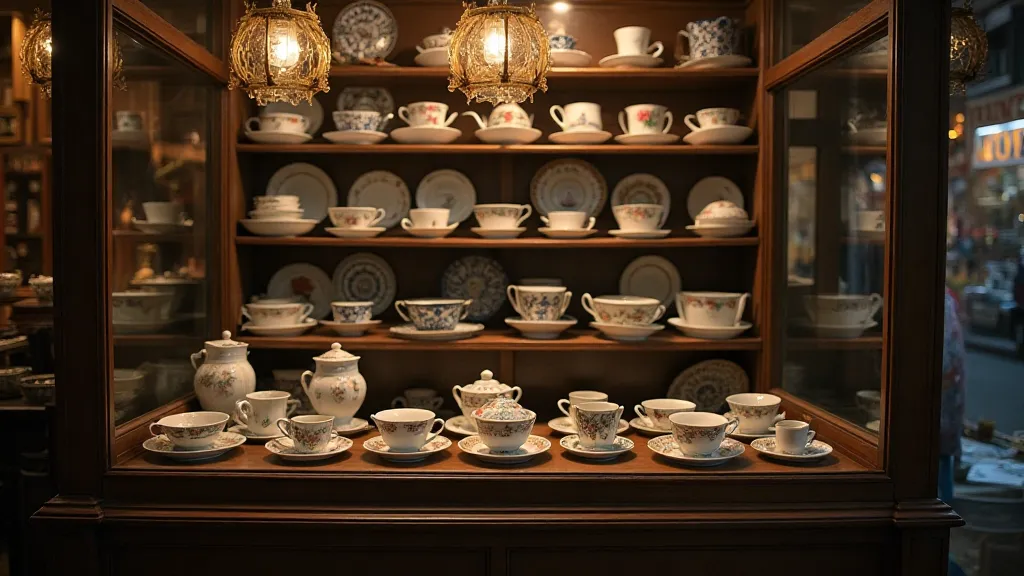
Restoration and Preservation – A Delicate Balance
Restoration is a controversial topic within the antique collecting world. While some collectors advocate for full restoration, others prefer to preserve the "patina" – the natural wear and tear that speaks to the cup's history. A cup with a chip or crack might be less aesthetically pleasing, but it also carries a story. It bears witness to a specific event, a moment in time. The decision to restore, or not, is often a deeply personal one, reflecting the collector's values and understanding of the piece's history.
Professional restoration can repair damage and preserve the structural integrity of a cup, but it’s essential to ensure that the work is done by a skilled and reputable conservator. Over-restoration, which attempts to erase all signs of age, can significantly diminish a cup's value and historical significance. For many collectors, the beauty lies in the imperfection, the subtle reminders of the cup's journey through time. This journey often involved significant travel and usage, contributing to the unique character of each piece.
Beyond the Cup: Exploring the Cultural Landscape
The study of antique tea cups extends beyond the porcelain itself. It's a window into the broader cultural landscape of the time, reflecting social customs, economic conditions, and artistic trends. Examining the accompanying accessories – the saucers, plates, and sugar bowls – provides a more complete picture of the tea-drinking ritual. Furthermore, understanding the materials used in production, from the clay itself to the pigments used for decoration, offers valuable insights into the technological advancements of the era. The intricate details present in these pieces often provide a visual record of the changing world.
The Enduring Appeal of a Simple Cup
Collecting antique tea cups isn't about acquiring valuable assets or impressing others. It's about cultivating a deeper appreciation for history, craftsmanship, and the enduring power of simple objects. Holding a delicate porcelain cup, tracing the intricate patterns with your fingertips, and imagining the hands that have held it before—this is the true reward of collecting. It’s about connecting with the past in a tangible way, unearthing forgotten narratives, and keeping the echoes in porcelain alive for generations to come. The simple act of sharing tea from these beautiful vessels creates a bridge between past and present, fostering a sense of connection and shared experience. The stories embedded within each cup invite us to reflect on the lives and traditions of those who came before us, reminding us of the enduring power of human creativity and the importance of preserving our cultural heritage. The fragility and beauty of these cups inspire a sense of reverence and responsibility, encouraging us to treat them with care and pass them on to future generations.
